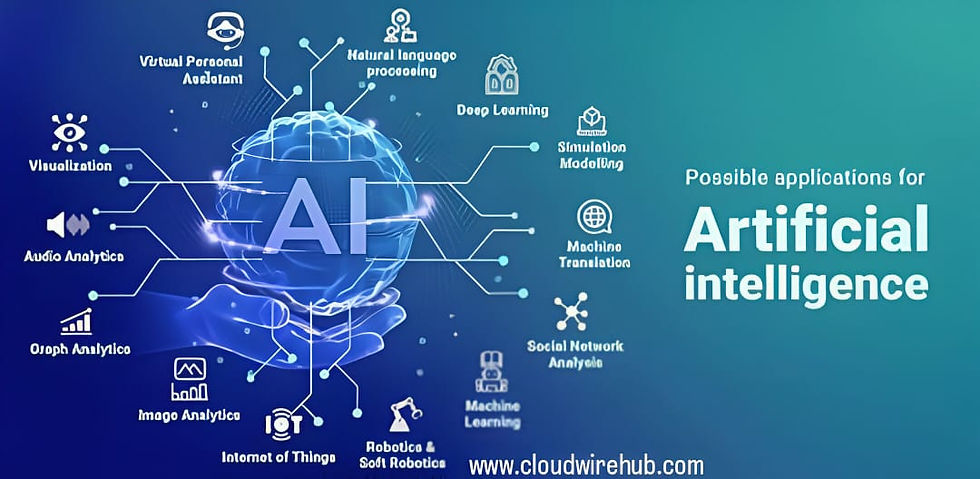Hey AI, Can You Handle This? The Uncharted Territory of AI-Driven Automation
- Mar 2
- 4 min read

In today's fast-paced world, the discussion around Artificial Intelligence (AI) and automation is louder than ever. Both supporters and critics share their views on its impact on our lives. AI-driven automation isn’t just a trend; it marks a significant change in how businesses operate, how we interact with technology, and even how we perceive our jobs. In this post, we will explore the exciting opportunities that AI-driven automation presents, the challenges it brings, and its future implications.
Understanding AI and Automation

AI-driven automation is no longer limited to routine, rule-based tasks—it’s now tackling creative problem-solving, decision-making, and real-time adaptability.
To grasp the potential of AI, we need to differentiate it from automation. Automation refers to technology that carries out tasks with little to no human input. This can range from simple actions like automatic email responses to complex functions like manufacturing assembly lines.
AI goes a step further by enabling machines to perform cognitive tasks such as learning and problem-solving. When combined, they create AI-driven automation that greatly boosts efficiency. For instance, chatbots can handle customer inquiries while learning from interactions, becoming more effective over time.
The Rise of AI-Driven Automation
Numerous industries are leaning heavily into AI-driven automation. Its growth can be attributed to several key factors:
Data Explosion: The amount of data generated globally has skyrocketed. According to IBM, over 2.5 quintillion bytes of data are created each day. AI can analyze this data to optimize operations and make decisions almost instantly.
Cost-Effectiveness: Companies are eager to reduce expenses. Research from McKinsey reveals that adopting AI can lower operational costs by up to 40%, enhancing profitability by streamlining processes and reducing mistakes.
Increased Customer Expectations: Today’s consumers demand rapid responses and tailored experiences. A study by Salesforce showed that 70% of consumers expect personalized interactions, something AI can provide by analyzing customer data effectively.
Benefits of AI-Driven Automation
Integrating AI-driven automation into business practices offers a host of advantages:
Efficiency: Routine tasks can be automated, freeing up human employees to focus on creative projects. A survey by Deloitte found that 86% of companies that use automation report increased productivity.
Consistency: Unlike humans, machines maintain the same level of output without getting tired. This ensures high-quality results every time.
Scalability: Businesses can easily manage growth with AI. Instead of hiring more staff to handle increased demand, they can enhance existing systems to manage larger workloads seamlessly.
Enhanced Decision Making: AI can uncover trends and patterns that humans might overlook. Companies using AI for data analysis have seen a 20% improvement in decision-making efficiency.
Challenges in Implementing AI-Driven Automation

From coding assistants (like GitHub Copilot) to self-operating warehouses, AI doesn’t just automate steps—it can handle entire end-to-end business processes.
Despite its benefits, adopting AI-driven automation comes with challenges:
Job Displacement: A major concern is the potential for job loss. According to a report by the World Economic Forum, while 85 million jobs may be displaced by 2025 due to AI, 97 million new roles could emerge that require different skills.
Initial Investment: The upfront costs for AI implementation can be high, involving technology setup and employee training. Companies should consider long-term savings and gains to justify initial investments.
Data Privacy and Ethics: With AI's reliance on data, ensuring user privacy is crucial. Companies must navigate regulations like GDPR in Europe, which aim to protect personal information.
Practical Applications of AI-Driven Automation

Modern AI automation systems use reinforcement learning to teach themselves better ways to perform tasks, reducing human intervention over time.
AI-driven automation is making waves in various industries. Here are compelling examples:
Healthcare: AI technologies are improving patient care. AI algorithms can analyze medical images to identify issues like tumors with over 90% accuracy, allowing doctors to focus on treatment rather than diagnostics.
Manufacturing: AI predicts when equipment needs maintenance, reducing downtime by 20%, according to Deloitte. This reliability helps maintain steady production schedules.
Retail: AI helps retailers understand shopping behaviors. For instance, Amazon uses AI to suggest products based on user interactions, reportedly increasing sales by 29% through personalized recommendations.
Finance: Banks use AI-powered automation to detect fraudulent transactions, process loan applications faster, and improve customer service with intelligent chatbots.
Education: AI-driven tutors and personalized learning platforms help students improve performance by adapting to their unique learning styles.
The Future of AI-Driven Automation

Retailers, content platforms, and even healthcare systems are using AI-driven automation to personalize experiences in real-time, adapting to user preferences instantly.
What does the future hold for AI-driven automation? The outlook is promising, and the following trends are noteworthy:
AI in Everyday Tasks: We will see AI integrated into more daily tasks, from grocery shopping bots to smart home systems, enhancing convenience in everyday life.
Collaborative Robots (Cobots): Cobots are designed to assist human workers, improving productivity without replacing jobs. Companies like Universal Robots have seen a 30% increase in efficiency with cobots.
Result-Driven Automation: As businesses shift focus to outcomes instead of processes, AI-driven automation will help tailor solutions that align with specific goals, leading to better performance metrics.
Advanced AI-Powered Assistants: Virtual assistants will become even more human-like, capable of handling complex tasks such as legal analysis and medical diagnosis.
Autonomous Vehicles: AI is expected to play a huge role in transportation, with self-driving cars becoming more widespread, reducing accidents, and improving traffic efficiency.
Embracing the Future of Work

The next frontier is AI systems managing other AI systems, where one AI monitors, optimizes, and even corrects another AI’s actions, creating a fully autonomous digital workforce.
AI-driven automation is no longer a concept of the future; it is actively transforming our work and daily life. While challenges exist, the benefits of efficiency, enhanced decision-making, and innovation point towards an optimistic future.
As we navigate this new landscape, it’s essential for individuals and organizations to adapt and stay informed. The question isn’t just, "Hey AI, can you handle this?" but also, "Are we prepared to embrace these changes and grow alongside AI?"



Comments